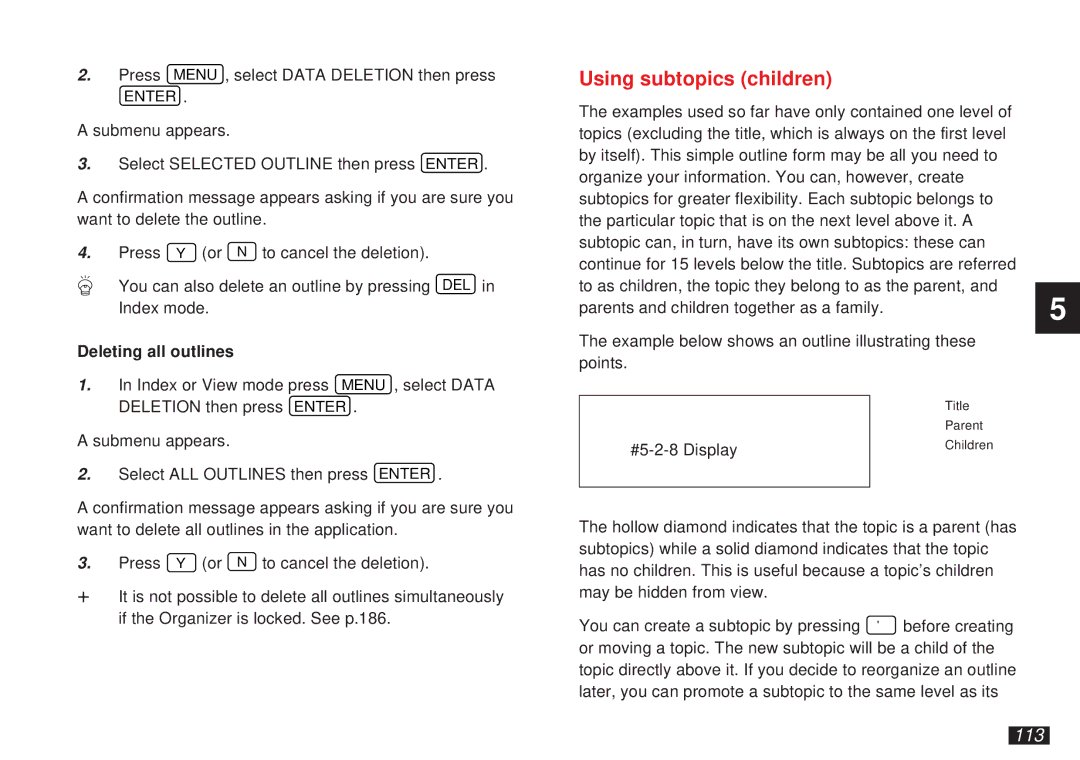
2.Press MENU , select DATA DELETION then press
ENTER .
A submenu appears.
3.Select SELECTED OUTLINE then press ENTER .
A confirmation message appears asking if you are sure you want to delete the outline.
4. Press Y (or N to cancel the deletion).
You can also delete an outline by pressing DEL in Index mode.
Deleting all outlines
1.In Index or View mode press MENU , select DATA DELETION then press ENTER .
A submenu appears.
2.Select ALL OUTLINES then press ENTER .
A confirmation message appears asking if you are sure you want to delete all outlines in the application.
3. Press Y (or N to cancel the deletion).
+It is not possible to delete all outlines simultaneously if the Organizer is locked. See p.186.
Using subtopics (children) |
| |
The examples used so far have only contained one level of |
| |
topics (excluding the title, which is always on the first level |
| |
by itself). This simple outline form may be all you need to |
| |
organize your information. You can, however, create |
| |
subtopics for greater flexibility. Each subtopic belongs to |
| |
the particular topic that is on the next level above it. A |
| |
subtopic can, in turn, have its own subtopics: these can |
| |
continue for 15 levels below the title. Subtopics are referred |
| |
to as children, the topic they belong to as the parent, and | 5 | |
parents and children together as a family. | ||
| ||
The example below shows an outline illustrating these |
| |
points. |
|
| Title |
| Parent |
Children | |
|
|
The hollow diamond indicates that the topic is a parent (has subtopics) while a solid diamond indicates that the topic has no children. This is useful because a topic’s children may be hidden from view.
You can create a subtopic by pressing ' before creating or moving a topic. The new subtopic will be a child of the topic directly above it. If you decide to reorganize an outline later, you can promote a subtopic to the same level as its
